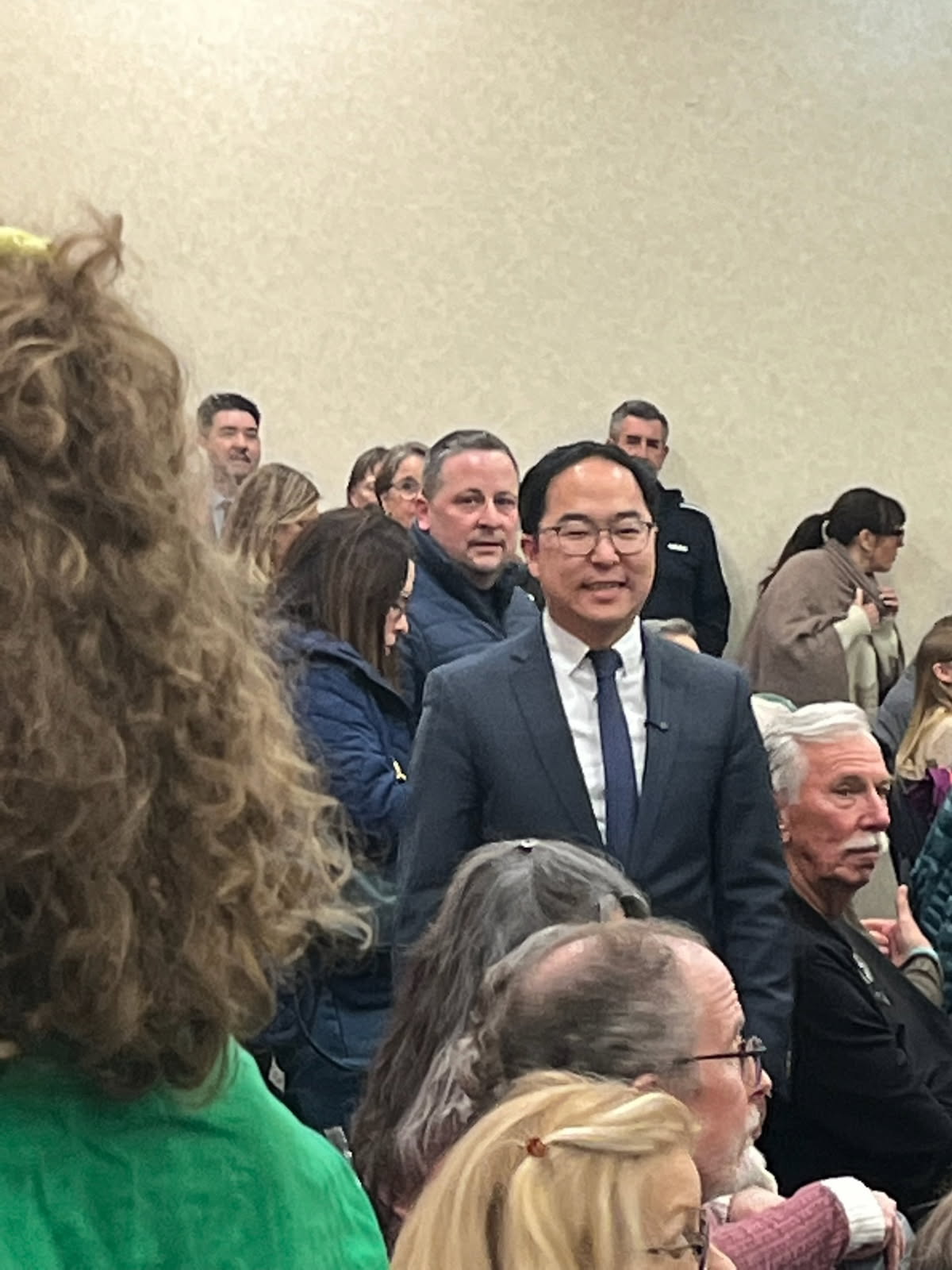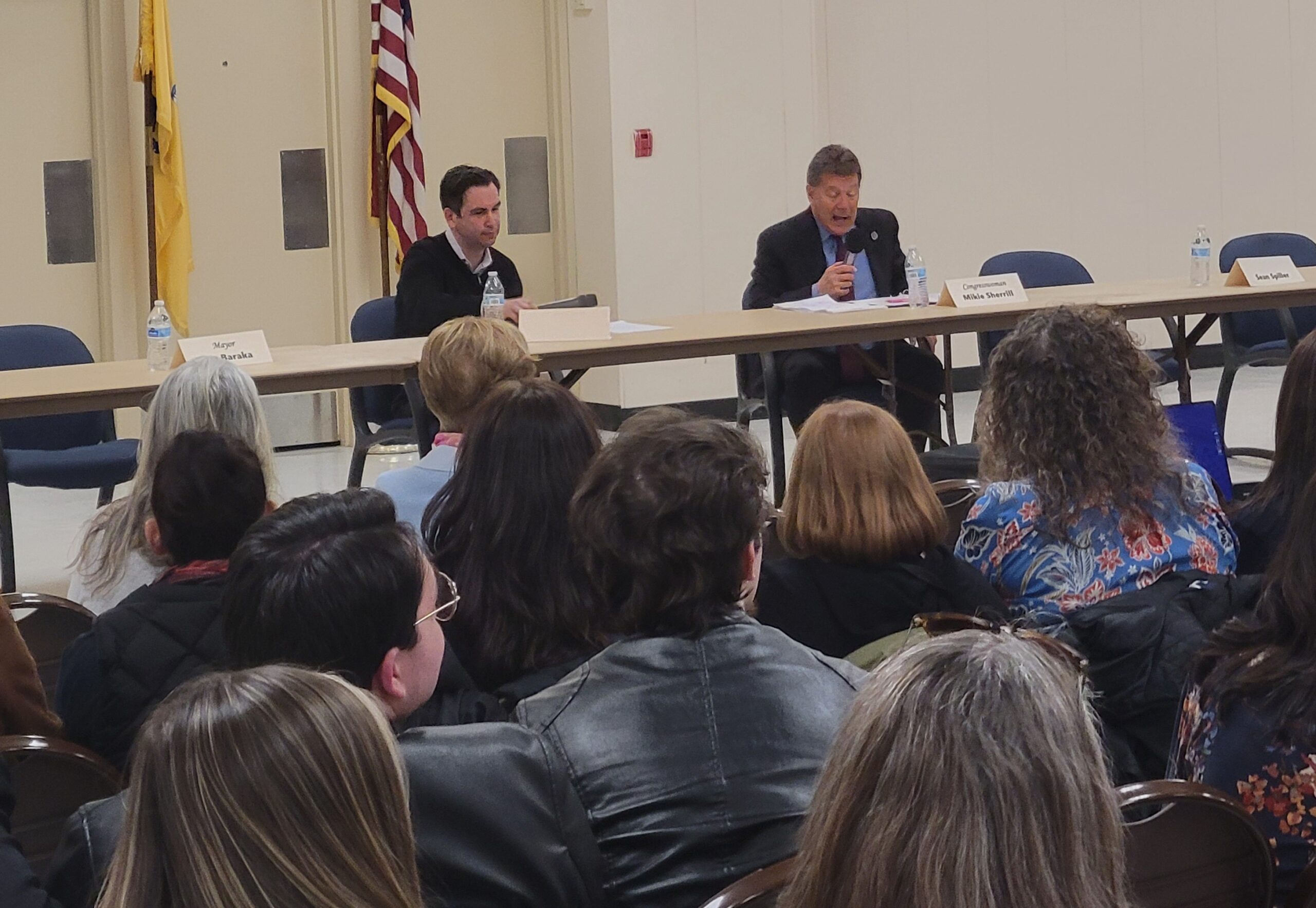
Tammy Murphy versus Andy Kim contains all the drama of a high school cafeteria food fight – with the added bonus of actual historical significance – Jersey style. The meltdown of Bob Menendez on corruption charges created an opening for a Democrat who wants to be the next U.S. Senator from the Garden State. First Lady Murphy and U.S. Rep. Kim independently collected their ideas and stepped forward to bravely make the case for why they should succeed the embattled sitting senator. Now, not a lot of people know where these two candidates stand, or what makes them tick. According to a Monmouth University Poll released earlier this month, “Among Democratic voters, Kim gets a 48% favorable and 2% unfavorable rating, with 24% offering no opinion and 26% saying they have not heard of him. Murphy gets a 24% favorable and 13% unfavorable rating from her fellow Democrats, with a sizable 50% who say they have no opinion of her and 13% who have not heard of her.”
Springing out of the gates during convention season, Murphy and Kim promptly cut introductory videos (see below) in order to connect with primary voters and project their messages as their rivalry intensifies.
The question is, how successful are they early in closing the gap with voters who don’t really know them or have strong opinions one way or the other about them and their beliefs?
Let’s find out…
MURPHY
In her ad, “Every Day,” Murphy highlights her own family as she tries to get across her dedication to protecting the next generation’s future. The businesswoman and mom sequentially highlights improved childbirth survival rates for “Black and Brown” New Jerseyans under her watch as first lady, commitment to fighting for a cleaner, greener, and healthier New Jersey, and a promise to put gluttonous, self-serving, and corrupt Washington politicians in the rearview mirror.
KIM
In his ad, “My Family’s American Dream,” Kim accentuates his priorities, which are his wife and children. Amid images of uncertainty and chaos, the congressman expresses his devotion to promoting a better future for upcoming generations. He acknowledges that many people in American right now don’t feel served by politicians in Washington, and ask themselves “Why bother?” Says the optimistic Kim, “The opposite of democracy is apathy.”
WHAT IT ALL MEANS
These ads show us what the candidates want us to believe is the true reason for their run. They say they are primarily focused on contributing to the well-being of the next generation of New Jerseyans. In case there’s any doubt out there, Tammy Murphy sports a necklace bearing a pendant in the likeness of NJ, and apparently loves connecting with the state’s toddler population. Kim? He hangs out at a typical backyard barbecue talking in a folksy way to, well, folks – especially folks with kids, like him. Just in case we don’t get it, Murphy – who needs the Northern County organization lines to win the primary and possesses 62% of the party organization backing in New Jersey – specifically identifies the needs of underserved minorities. The congressman, running with just 38% of the county organization backing, and most of it in the central to southern part of the state, wants to galvanize and inspire – not just connect with – disaffected Jerseyans.
Where does that leave the candidate seeking to make history as the first woman from New Jersey in the United States Senate, and her rival, who would be the first Asian American from NJ to claim a United States Senate seat?
If the developing primary for the United States Senate increasingly resembles a juvenile food fight (more on that next week, when we break down the latest round of attack ads!), maybe that’s because the two leading Democratic candidates – at least by their own admission, in their introductory campaign ads – really, really like kids, both their own, and those of the New Jersey voters.
(Visited 35 times, 35 visits today)
In the upcoming gubernatorial election in New Jersey, two familiar faces are once again vying for the top spot: incumbent Governor Phil Murphy and Republican challenger Jack Ciattarelli. Both candidates have been actively campaigning across the state, trying to win over voters with their respective platforms and visions for the future of New Jersey.
Governor Murphy, a Democrat, is seeking a second term in office after first being elected in 2017. During his time in office, he has focused on issues such as raising the minimum wage, expanding access to healthcare, and investing in infrastructure and education. He has also been a vocal advocate for progressive policies, such as gun control and environmental protection.
On the other hand, Jack Ciattarelli, a former state assemblyman and businessman, is running on the Republican ticket. He has positioned himself as a more moderate alternative to Governor Murphy, focusing on issues such as property tax reform, job creation, and improving the state’s business climate. Ciattarelli has also criticized Murphy’s handling of the COVID-19 pandemic, arguing that the governor’s restrictions have hurt small businesses and stifled economic growth.
One of the key differences between the two candidates is their approach to governing. Governor Murphy has been criticized by some for his progressive agenda and for what opponents see as overreach in his executive powers. Ciattarelli, on the other hand, has promised to be a more fiscally conservative leader who will prioritize reducing taxes and cutting government spending.
As the election draws near, both candidates are ramping up their efforts to win over undecided voters. Governor Murphy has the advantage of being the incumbent and has a strong fundraising advantage, while Ciattarelli is hoping to capitalize on voter dissatisfaction with Murphy’s leadership.
Ultimately, the choice between Murphy and Ciattarelli will come down to which candidate voters believe is best equipped to lead New Jersey forward. With important issues such as economic recovery, healthcare, and education on the line, it is crucial for voters to carefully consider where each candidate stands on these issues before casting their vote in November.



